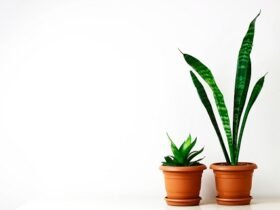The ZZ plant (Zamioculcas zamiifolia) has earned its reputation as one of the most resilient and low-maintenance houseplants available. Its ability to thrive in a variety of conditions makes it a favorite among both novice and experienced plant enthusiasts. This comprehensive guide explores the unique physiological traits, water storage mechanisms, drought tolerance, resistance to pests and diseases, and adaptation to low light conditions that contribute to the ZZ plant’s remarkable resilience.
Unique Physiological Traits
Rhizomes
- Storage Organs: One of the most distinctive features of the ZZ plant is its rhizomes. These thick, bulbous structures serve as storage organs for water and nutrients, allowing the plant to survive in periods of drought and poor soil conditions.
- Propagation: Rhizomes also play a crucial role in the plant’s propagation. New shoots and roots can emerge from these underground stems, making it easier to propagate the plant through division.
Leaf Structure
- Waxy Coating: The leaves of the ZZ plant are covered in a thick, waxy cuticle that reduces water loss through transpiration. This adaptation is crucial for survival in its native habitats, where water may be scarce.
- Compound Leaves: The ZZ plant has compound leaves, each consisting of multiple leaflets. This structure maximizes the surface area for photosynthesis while minimizing water loss.
Stomatal Regulation
- Water Conservation: The ZZ plant has adapted to regulate its stomata (small openings on the leaf surface) efficiently. These stomata open and close to control the exchange of gases and water vapor, helping the plant conserve water during dry periods.
Water Storage Mechanisms
Succulent-Like Traits
- Water Retention: Although not a true succulent, the ZZ plant exhibits several succulent-like traits. Its thick, fleshy leaves and stems are capable of storing water, which can be utilized during times of drought.
- Efficient Use: The plant’s ability to store water allows it to survive with minimal watering. This adaptation is particularly beneficial for indoor environments where consistent watering schedules may be challenging to maintain.
Root System
- Deep Roots: The ZZ plant’s root system extends deep into the soil, allowing it to access water and nutrients that may be out of reach for other plants. This adaptation is particularly useful in its native habitats with nutrient-poor soils.
- Aerial Roots: In some cases, ZZ plants may develop aerial roots that can absorb moisture from the air. This trait enhances the plant’s ability to thrive in humid environments.
Drought Tolerance
CAM Photosynthesis
- Crassulacean Acid Metabolism (CAM): The ZZ plant utilizes CAM photosynthesis, a specialized process that allows it to photosynthesize with minimal water loss. During the night, the plant’s stomata open to take in carbon dioxide, which is stored as malic acid. During the day, the stomata close to conserve water, and the stored carbon dioxide is used for photosynthesis.
- Water Efficiency: This adaptation is particularly advantageous in arid environments where water is scarce, enabling the ZZ plant to maintain metabolic functions without significant water loss.
Reduced Transpiration
- Leaf Adaptations: The thick, waxy coating on the leaves not only reduces water loss but also reflects sunlight, helping to keep the plant cool and reduce the need for excessive transpiration.
- Hydraulic Conductivity: The plant’s vascular system is adapted to minimize water movement, further conserving water during dry conditions.
Resistance to Pests and Diseases
Natural Defenses
- Toxic Compounds: The ZZ plant produces compounds that are toxic to many common pests and pathogens. These compounds deter insects and protect the plant from bacterial and fungal infections.
- Physical Barriers: The waxy cuticle on the leaves acts as a physical barrier against pests and pathogens, making it difficult for them to penetrate the plant’s tissues.
Environmental Adaptations
- Low Humidity Tolerance: The ZZ plant’s ability to thrive in low humidity environments reduces the risk of fungal infections, which are more common in high humidity conditions.
- Hardy Growth: The plant’s overall hardiness and robust growth make it less susceptible to damage from pests and diseases. Even if part of the plant is affected, it can continue to grow and recover.
Adaptation to Low Light Conditions
Shade Tolerance
- Low Light Efficiency: The ZZ plant is highly efficient at photosynthesizing in low light conditions. Its leaves contain high levels of chlorophyll, allowing it to maximize light absorption and maintain growth even in dim environments.
- Versatile Growth: This adaptation makes the ZZ plant an ideal choice for indoor spaces with limited natural light, such as offices, apartments, and rooms with north-facing windows.
Slow Growth Rate
- Energy Conservation: The plant’s slow growth rate is an adaptation to its native habitat, where resources are limited. By growing slowly, the ZZ plant conserves energy and resources, ensuring its survival during periods of scarcity.
- Longevity: This slow and steady growth contributes to the plant’s longevity, making it a long-lasting addition to any indoor garden.
FAQs About ZZ Plant
ZZ plants can complement a variety of other houseplants, including pothos, snake plants, and peace lilies. These plants have similar care requirements and can create a visually appealing indoor garden.
Yes, you can prune your ZZ plant to remove dead or damaged leaves and control its size. Use clean, sharp scissors or pruning shears to make clean cuts just above a leaf node. Avoid removing more than one-third of the plant’s foliage at a time.
If your ZZ plant has been neglected and is showing signs of stress, such as yellowing leaves or stunted growth, you can revive it by improving its care. Ensure it receives adequate light, water it properly, and consider repotting it in fresh, well-draining soil.
Yes, you can propagate ZZ plants from leaf cuttings. Select a healthy leaf and cut it into sections, ensuring each section has a portion of the leaf stem attached. Plant the cuttings in a well-draining potting mix and keep them moist until roots develop.
With proper care, ZZ plants can live for several years, and some can even survive for decades. Their slow growth rate and resilience make them long-lasting additions to indoor gardens.
ZZ plants are relatively disease-resistant, but overwatering can lead to root rot. To prevent this, ensure the plant is potted in well-draining soil and allow the top few inches of soil to dry out between waterings.
ZZ plants can be used for landscaping in warm climates, but they are best suited to shaded or protected areas. They can add a tropical touch to outdoor spaces but should be protected from direct sunlight and extreme temperatures.
Conclusion
The ZZ plant’s remarkable resilience can be attributed to its unique physiological traits, water storage mechanisms, drought tolerance, resistance to pests and diseases, and adaptation to low light conditions. These adaptations have enabled the ZZ plant to thrive in a variety of environments, from its native habitats in Eastern Africa to indoor spaces around the world. Understanding these adaptations not only enhances our appreciation of this hardy houseplant but also provides valuable insights into how to care for it effectively.














